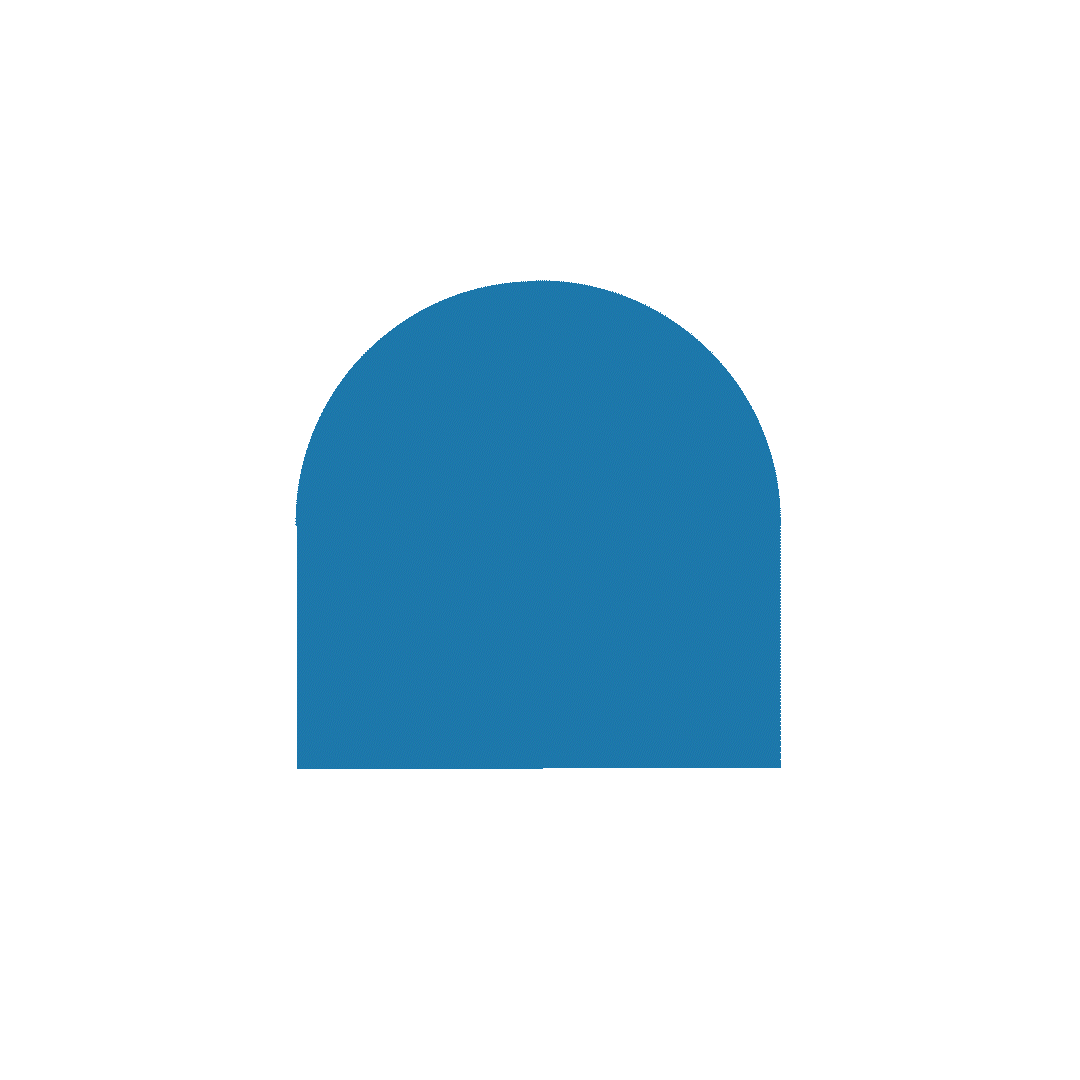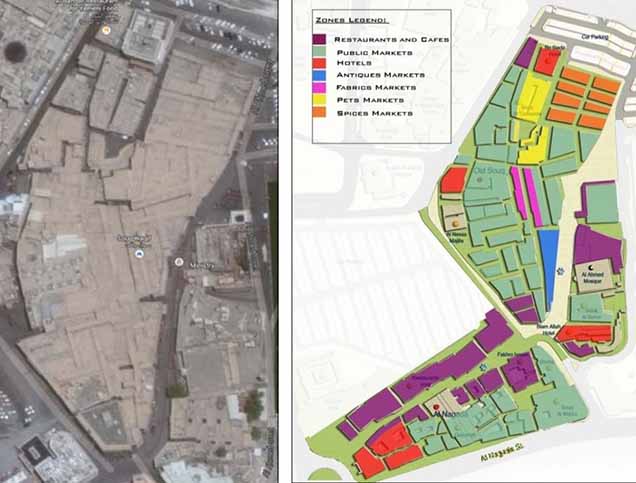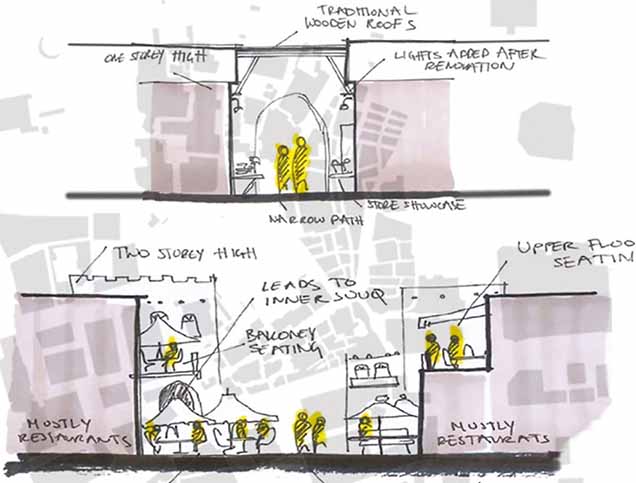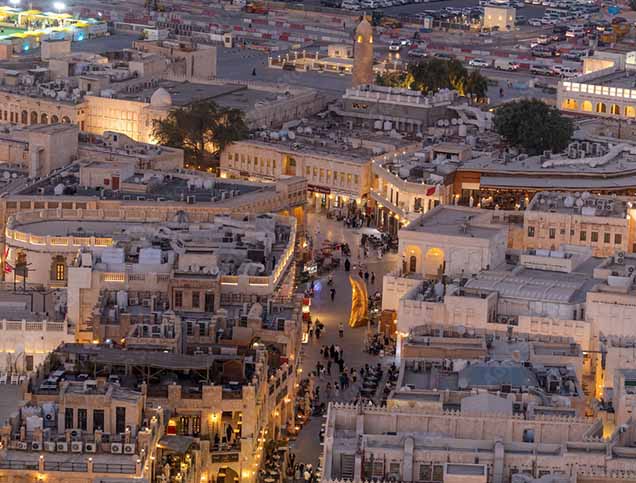
Close
responsive-lightbox domain was triggered too early. This is usually an indicator for some code in the plugin or theme running too early. Translations should be loaded at the init action or later. Please see Debugging in WordPress for more information. (This message was added in version 6.7.0.) in /home/kiju52ce/public_html/development/wp-includes/functions.php on line 6114updraftplus domain was triggered too early. This is usually an indicator for some code in the plugin or theme running too early. Translations should be loaded at the init action or later. Please see Debugging in WordPress for more information. (This message was added in version 6.7.0.) in /home/kiju52ce/public_html/development/wp-includes/functions.php on line 6114
Approach Words: City Identity, Heritage Preservation, Urban Livability
Public Policy Instruments: Communicative, Physical Intervention, Planning, Regulatory
Souk Waqifi, founded more than a century ago as a marketplace for merchants1, is part of a conservation2 project for one of the most culturally significant heritage sites3 in the old city of Doha. The project was initiated after a major fire destroyed a significant part of it in 2003 4. The conservation of Souk reflects the vision of The Emir of Qatar, Sheikh Hamad bin Khalifa Al Thani5 6, which is to preserve the city’s architectural and historical identity7, linking the present with the past. This seeks to reconstruct the lost image of historic Doha on one hand and attract tourists on the other.
The conservation strategy adopted aims to maintain Souk Waqif as an open-air public space in the city, fostering a vibrant cultural and economic environment that revolves around the souk. The project goals are to achieve livability8 through public spaces and facilities, maintaining cultural identity while improving local economy9 by preserving key old markets and crafts, introducing more business activities serving the souk, and making it a unique destination in Qatar10.

Title: Location of Souk Waqif with its key places.
Source: Click Here

Title: Map shows key zones and uses in the Souk Waqif.
Source: Click Here

Title: Graphical abstract illustrating design strategies for public and open spaces in the Souk Waqif.
Source: Click Here

Title: Aerial view of the souk showing the pedestrianized open spaces.
Source: Click Here
To implement the afore mentioned objectives, a master plan was proposed11 spanning an area of 0.164 square kilometer12, consisting of 500 ancient shops13. The master plan features a vibrant mix of uses including markets for antiques, fabrics, pets, spices, restaurants and cafes, and hotels among others. The souk also provides facilities such as public utilities14, parking, a police station, carriers services, and is connected to public transportation nodes. Additionally, the master plan emphasizes the role of public and shared spaces, including the accessible and shaded pedestrian pathways15. These spaces are designed to be inclusive16, and facilitate social gatherings and activities for all age groups and genders. For this, the souk organizes various local cultural events, including concerts, food and art exhibitions, horse and camel shows, and children’s activities such as train rides17 18.
Strategies for heritage preservation included the preservation of historic structures, reconstruction of old ones whenever possible, removal of inappropriate alterations and additions, and modernization of the local infrastructure19. The efforts to restore the site’s memory included renovating mud-rendered shops20, demolishing contemporary buildings, replacing metal roofing sheets with traditionally constructed roofs made of bamboo and mangrove wood with a layer of straw and clay for binding, and reintroducing traditional insulation methods to protect buildings from extreme temperatures21. It is worth noting that since most of the buildings in Souk Waqif were privately owned22, the government purchased these buildings from their owners in order to carry out the work.

Owner/Developer (Public)


Funder

Contractor/Implementer
The project was initiated by Amiri Diwanii 23 and developed with the Private Engineering Office24 of the Emiri Diwan along with the local Qatari Architect Mohamed Ali Abdullah25. The project was implemented by Al Ali Engineering Co. W.L.L.26 as the principal contractor. The overall estimated cost is 1,300,000,000 Qatari Riyals (around $357 million) which includes the cost of purchase of the whole souk (1 billion Qatari Riyals), and the renovation works (300 million Qatari Riyals)27.
The project has been implemented over two key phases. The first phase, which started in 2004 included the design phase28. The second phase, spanning from 2004 to 2008, encompassed the renovation and construction works of the souk29. The souk mainly attracts tourists from the Gulf Cooperation Council countries30 31, who are among the highest spenders. The number of visitors peaked during the FIFA World Cup Qatar 2022, with more than 100,000 people visiting the Souk per day32.
Project Link
Endnotes
References